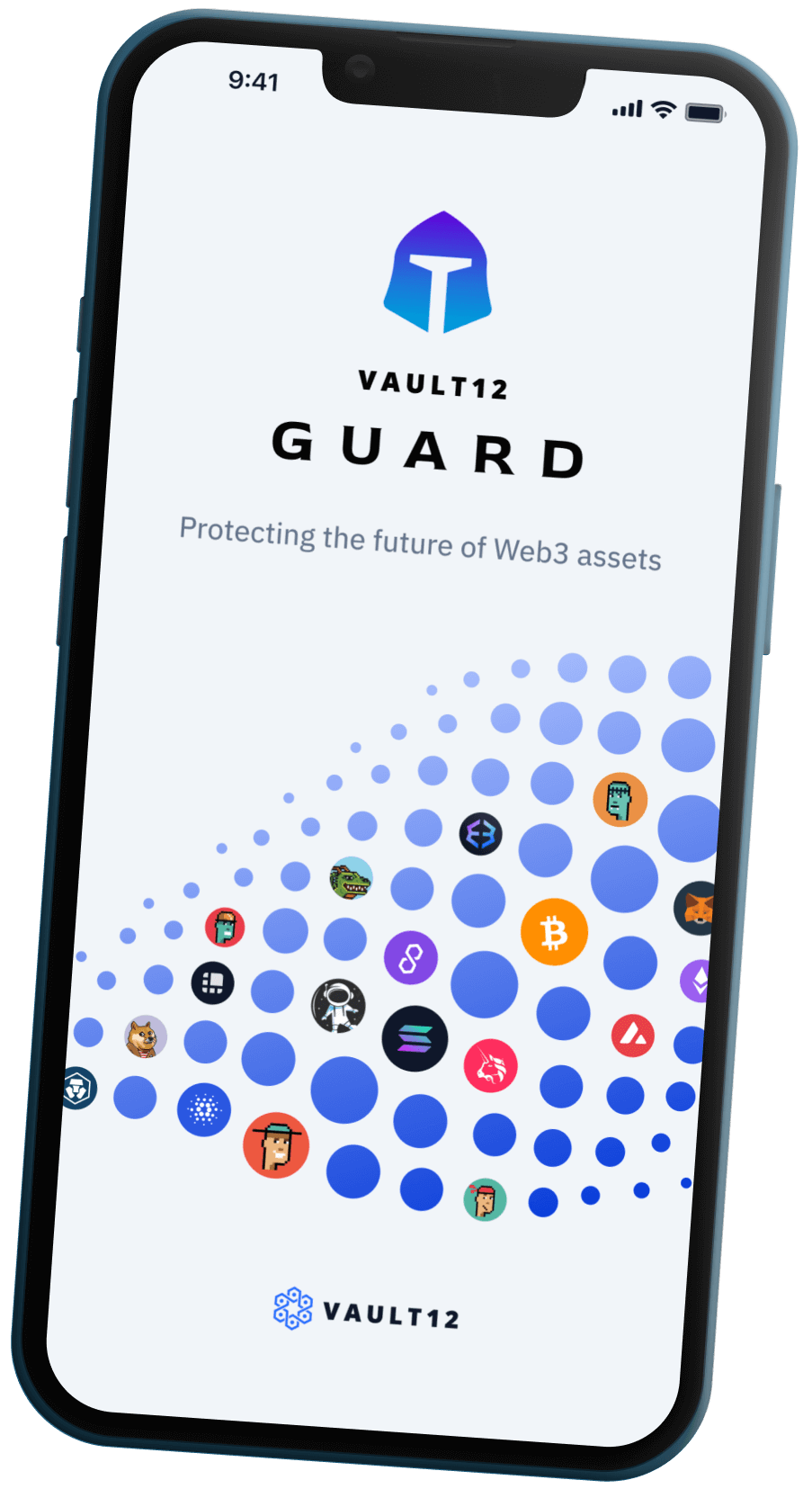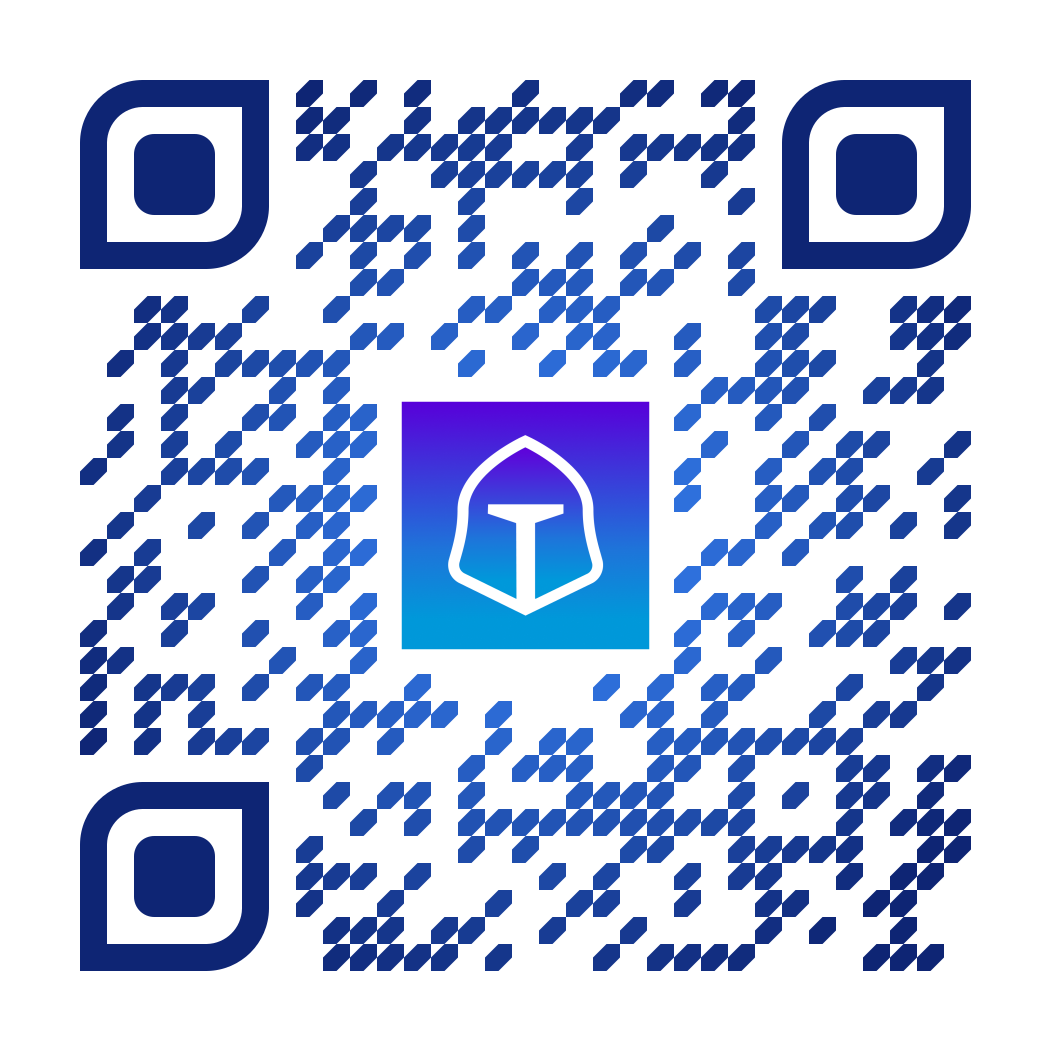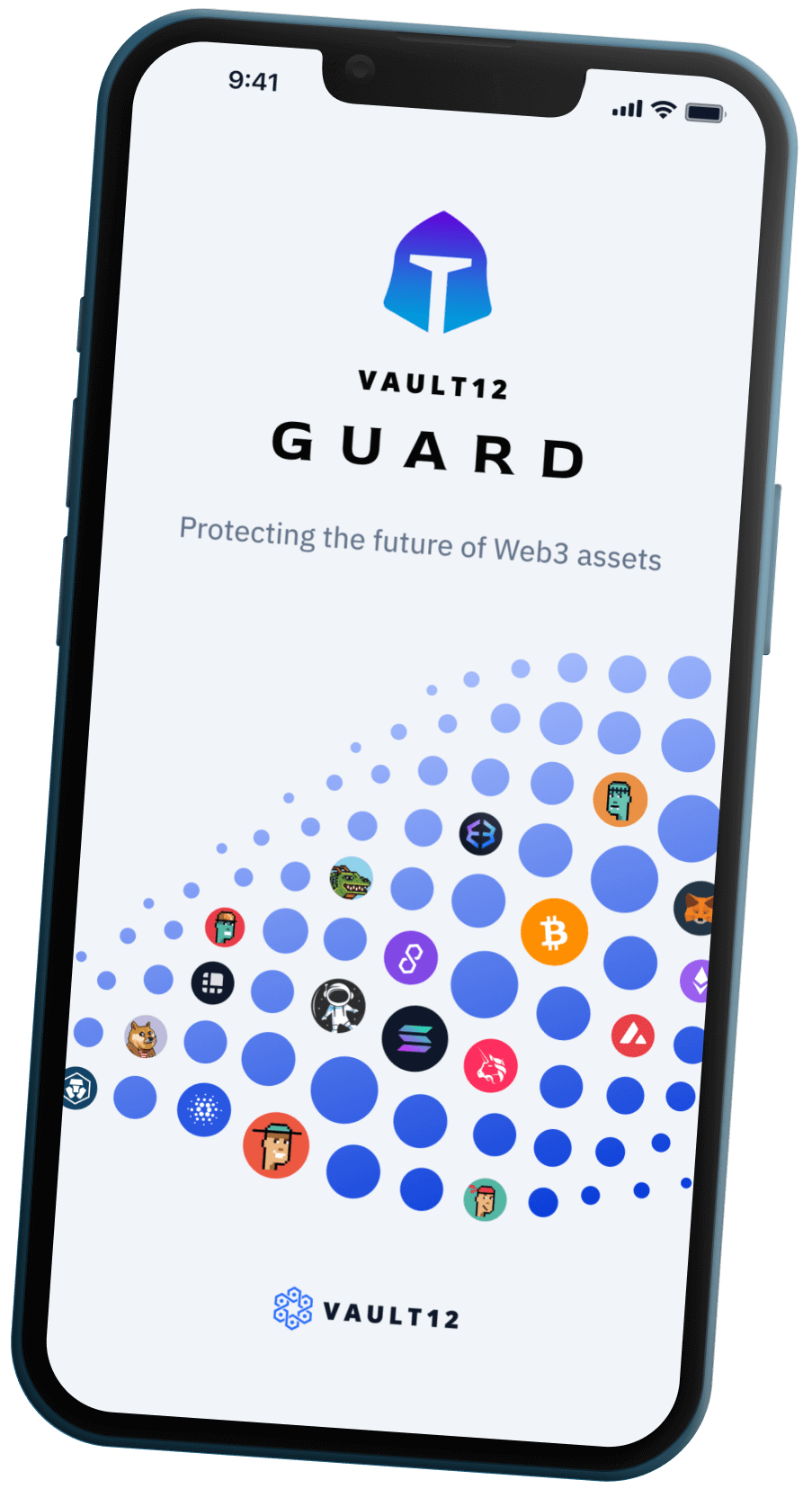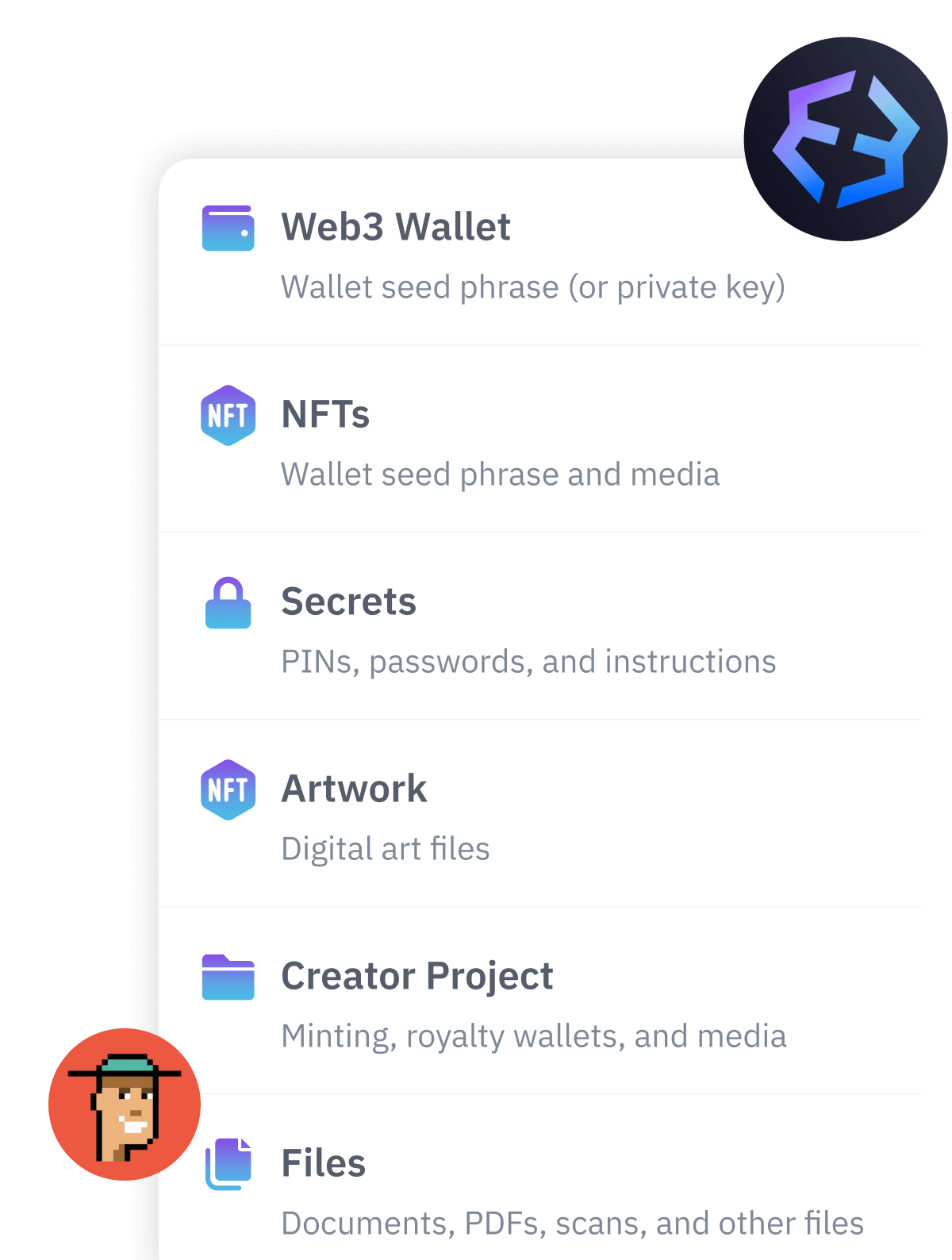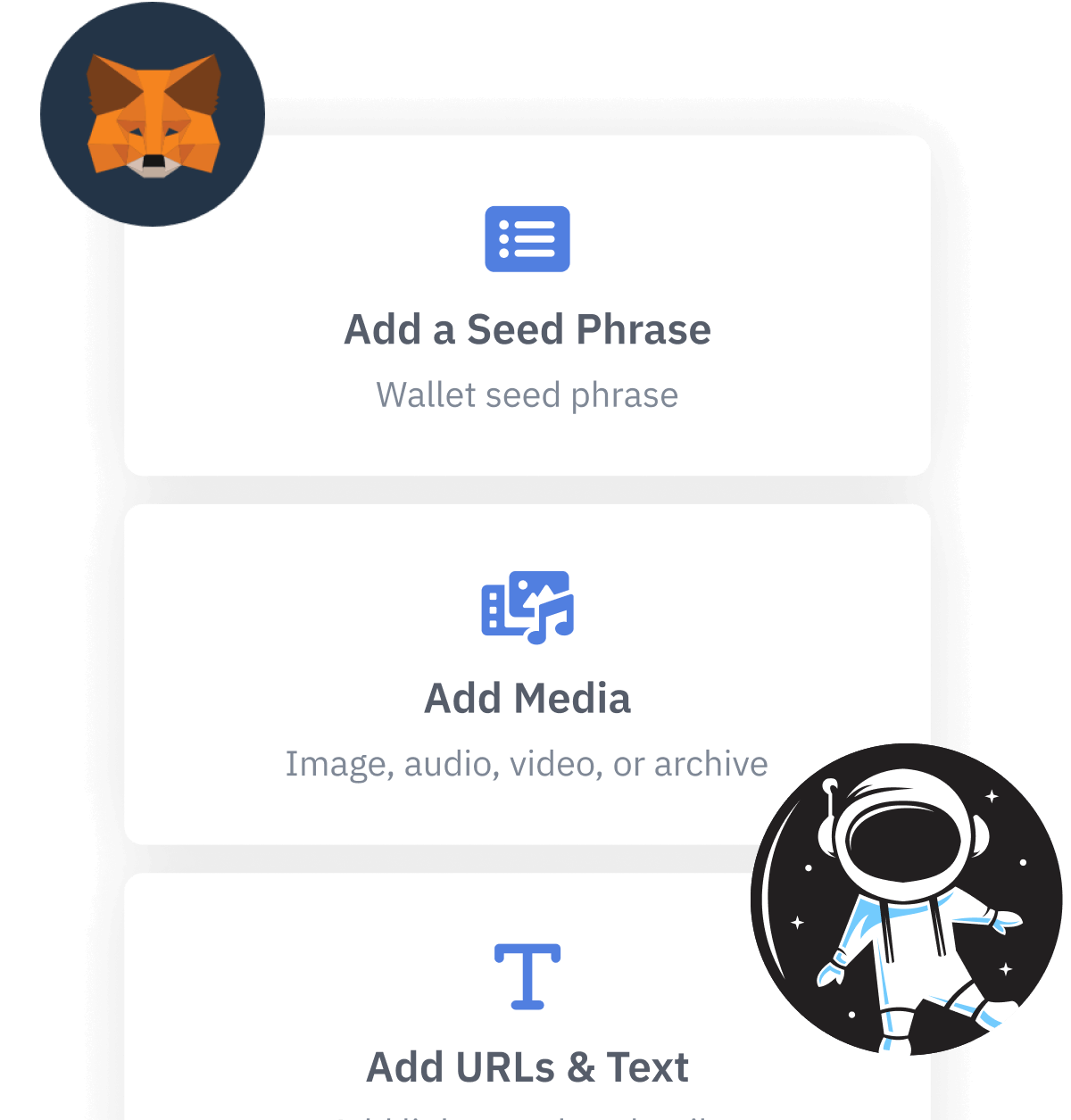
Contents
- What are Inscriptions, Ordinals, and Runes?
- What makes Runes better than BRC-20?
- Why do Runes have such long names?
- What will Runes be used for?
- What are some popular Bitcoin Rune projects?
- How can you mint, buy, and sell Runes?
- How do you use a wallet to back up and protect your Runes?
- How do you ensure inheritance of Bitcoin Runes?
- How can Vault12 Guard protect your Bitcoin Runes?
Backup and Inheritance for Bitcoin Runes
Understanding Runes: how to protect your ownership and future inheritance.
What are Inscriptions, Ordinals, and Runes?
We recently shared the story about how in 2023, the Ordinals protocol was added to the Bitcoin network. Users began to use Ordinals to inscribe unique data (NFT "inscriptions") directly onto Bitcoin satoshis, and soon thereafter, Ordinals inscriptions enabled the creation of fungible BRC-20 tokens on the Bitcoin blockchain. Inscription-based Bitcoin NFTs and BRC-20 tokens expanded the Bitcoin landscape to encompass both fungible and non-fungible tokens. BRC-20 tokens became fairly popular, achieving a market cap exceeding $2 billion.
Then in September 2023, just as Ordinals was reaching peak popularity, the same developer behind Ordinals, Casey Rodarmor, proposed another new protocol for tokens on Bitcoin: Runes. Runes introduces a fresh token standard for Bitcoin, streamlining the process of creating fungible tokens and enhancing efficiency for users. The motivation behind Runes was to improve upon BRC-20.
Runes launched at the same time as the April 20, 2024 Bitcoin halving event, at network block 840,000.
What makes Runes better than BRC-20?
Runes aligns more closely than BRC-20 with the Bitcoin community’s values and unwritten rules, like protocol simplicity, independence of off-chain data, and using unspent transaction outputs (UTXOs) as a state model. Runes also uses a smaller blockchain footprint, thus avoiding the perception that it is filling up the Bitcoin blockchain with “garbage” data.
In contrast to the complexity of BRC-20, the simple rules of Runes tokens allow the tokens to be included in many wallets, requiring only relatively minor modifications by wallet developers.
If you are interested in learning more about how the Runes protocol works, you can read more about it in the Ordinals documentation.
Why do Runes have such long names?
Runes have a unique, forward-looking characteristic of ticker naming: shorter names for individual Runes will be unlocked (allowed) over time. This rule is intended to prevent a rush of front-running and "squatting" more attractive, shorter names. At first, only Rune names of thirteen or more characters are unlocked, which is why (depending on when you read this article) you might only see Runes with long names avaliable for mint and sale. An example of an early Rune name is "UNCOMMONGOODS." How quickly are shorter names unlocked? Runes was unlocked at block 840,000, and after that, the completion of every 17,500 blocks (which takes about four months) unlocks the next-smaller length of Rune name availability.
What will Runes be used for?
Initially, we will inevitably see a lot of meme Runes traded, since they are so simple to create. There are more "serious" Runes projects in the works, but it’s hard to predict which will be successful, and when more value-added Runes-based projects will be available.
What are some popular Bitcoin Rune projects?
You can follow along with which Runes projects are new and most popular at several online Runes explorers, including Ordiscan.
How can you mint, buy, and sell Runes?
Platforms like Ordinalbots can make the process of "etching" and minting Runes simple. "Etching" sets the properties of Runes, and “minting” creates new ones that may then be transferred.
Trading platforms like Magic Eden already support Runes purchases and sales. OKX is another.
Always do your own research and/or consult with a professional if you're unsure about anything.
How do you use a wallet to back up and protect your Runes?
Runes-capable wallets operate like other crypto wallets. To buy some Runes and back them up:
- Create an account, secure your seed phrase backup, and deposit funds into your choice of Runes-capable wallet.
- Create or purchase Bitcoin Runes on your platform of choice.
- Use a Runes-compatible Receive address in your wallet to receive the Bitcoin Runes from the marketplace or trading platform you've chosen.
How do you ensure inheritance of Bitcoin Runes?
You must protect your long-term storage and the inheritance of Bitcoin Runes in the same way as you would any other Web3 digital asset.
Web3 asset inheritance is different from the relatively straightforward steps for a traditional inheritance, where you go to the bank or the broker, you tell them that someone has passed on or is incapacitated, and you are given access to those assets. In contrast, with Web3 assets, you, the owner, are responsible for the security and safekeeping of those assets. If you haven't recorded all of the details about your assets and communicated them to the people who will be the beneficiaries, your assets will likely be lost. Even if you did record the details correctly, there are still a lot of ways for heirs to go wrong with complex technical things during the succession process.
Take the risk out of your web3 and Bitcoin asset wallet backups by storing your wallet seed phrases in a specialized digital vault.
How can Vault12 Guard protect your Bitcoin Runes?
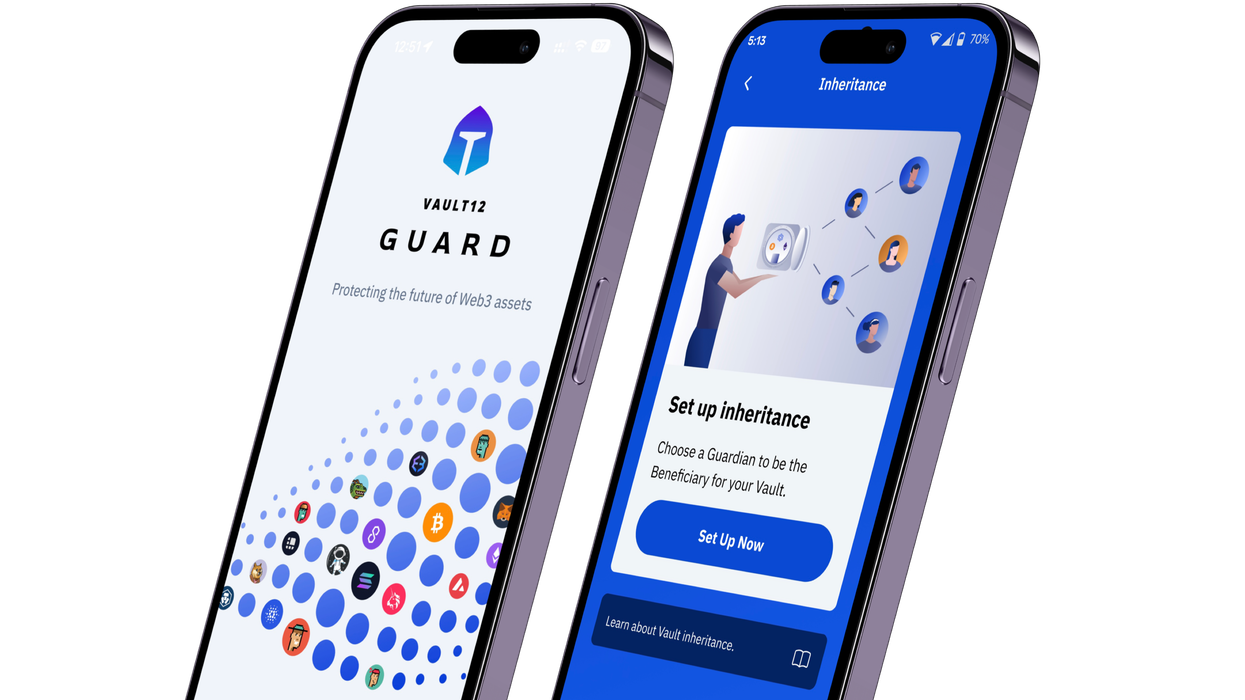
Our latest technology release Vault12 Guard is a mobile app designed for ordinary people who are collectors, Web3 creators, and crypto enthusiasts buying cryptocurrency. Vault12 Guard is designed to make it as simple as possible to back up all of your digital assets and then assign a beneficiary who can receive those assets in the event of incapacitation or death.
With Vault12 Guard, it's very simple to back things up for your own wallet recovery. It's very simple to activate Inheritance. And it's very simple for your heirs to retrieve those assets when needed. Download the app from any of the app stores (iOS or Android), install it, and create a digital vault. You can immediately start adding assets, which will be stored locally on your phone device for full, distributed, decentralized backup and inheritance.
With Vault12 Guard, you can add and assign your own vault Heirs and Guardians. These are people that you know: they could be business partners, family members, or friends who will guard your vault. Your Guardians will grant access to your Web3 assets on the event of your passing.
You can learn more about Crypto Inheritance here, or jump right into learning how to quickly set up your vault to bring longevity and resilience to your digital assets journey.
Backup and Inheritance for Bitcoin Runes
Understanding Runes: how to protect your ownership and future inheritance.

Wasim Ahmad
Wasim is a serial entrepreneur and an advisor in the fields of AI, blockchain, cryptocurrency, and encryption solutions. At Vault12, the pioneer of crypto inheritance, he led the private and public fundraising efforts and focuses today on expanding the Vault12 ecosystem. His crypto experience began with AlphaPoint, where he worked with the founding team to launch the world's first crypto trading exchanges. Previously he was a founding member of Voltage Security, a spinout from Stanford University, that launched Identity-Based Encryption (IBE), a breakthrough in Public Key Cryptography, and pioneered the use of sophisticated data encryption to protect sensitive data across the world's payment systems. Wasim serves on the board of non-profit, StartOut, and is a Seedcamp and WeWork Labs global mentor.
Wasim graduated with a Bachelor of Science in Physics and French from the University of Sussex.

Art Krotou
Art is a crypto-security expert and researcher with serial entrepreneurship background. Having a degree in physics and experiences in multiple cutting-edge industries like fintech, secure hardware and semiconductors, and identity gave him a unique multi-faceted perspective on the problem of key management for individuals in the crypto networks and the evolution of the internet in general.
In his current work, he is specifically researching how cryptographic keys can be inherited without posing a threat to 3rd parties in edge cases. In addition, he advocates for "fault-tolerance via secrets automation". He discusses the quantitative impact of user experience factors on the uptake of non-custodial solutions.
As one of his most notable accomplishments, he co-founded and led through the early years of the company that contributed to the complex technology behind Apple's recent M-series CPUs. He is also the creator of the most friendly and aesthetically pleasing, but nonetheless super secure and fault-tolerant hardware wallet - U•HODL.
Check out his curated series of "Vault12 Learn" contributions below, and follow him on Twitter and LinkedIn for more sharp insights.
You will lose your Bitcoin and other crypto when you die...
...unless you set up Crypto Inheritance Management today.
It's simple — if you don't worry about crypto inheritance, nobody else will — not your software or hardware wallet vendors, not your exchanges, and not your wealth managers. So it's up to you to think about how to protect the generational wealth you have created, and reduce the risks around passing that crypto wealth on to your family and heirs. What are the challenges with crypto inheritance?
- Crypto Wallets are difficult to use and do not offer crypto inheritance management. In fact, most of them tell you to write down your seed phrase on a piece of paper, which is practically useless.
- Some people back up their wallet seed phrases or private keys on paper, local devices like hardware wallets or USBs, or in the cloud. All of these options have severe drawbacks that range from hacking to accidental loss to disrupted cloud services.
- Software wallets operate onspecific blockchains, yet your crypto assets span multiple blockchains. For inheritance to work, you must be able to manage inheritance across every blockchain — now and forever.
Crypto Inheritance Management: Secure, Self-Custody Crypto Inheritance and Backup
Vault12 is the pioneer in Crypto Inheritance Management, offering a simple yet powerful way to designate a legacy contact and pass on your crypto assets—like Bitcoin (BTC), Ethereum (ETH) and Solana (SOL) —to future generations. Built for everyday users yet robust enough for the most seasoned crypto enthusiasts, Vault12 Guard ensures your wallet seed phrases and private keys are preserved in a fully self-sovereign manner, across all Blockchains.
At the heart of Vault12 Guard is quantum-resistant cryptography and a decentralized, peer-to-peer network of trusted Guardians. Your critical information is never stored in the cloud, on Vault12 servers, or even on local devices—dramatically reducing the risk of a single point of failure. By fusing a powerful software layer with the Secure Element of iOS devices (Secure Enclave) and Google devices (Strongbox), Vault12 Guard locks down your private keys against present and future threats.
Our innovative approach harnesses social recovery, enabling you to appoint one or more trusted individuals or mobile devices as Guardians. These Guardians collectively safeguard your protected seed phrases in a decentralized digital Vault—so there’s no need for constant lawyer updates or bulky paperwork. Should the unexpected happen, your chosen legacy contact can seamlessly inherit your crypto assets without compromising your privacy or security.
Preserve your digital wealth for generations to come with Vault12 Guard—the simplest, most secure way to manage crypto inheritance and backup.
Take the first step and back up your crypto wallets.
Designed to be used alongside traditional hardware and software crypto wallets, Vault12 Guard helps cryptocurrency owners back up their wallet seed phrases and private keys (assets) without storing anything in the cloud, or in any single location. This increases protection and decreases the risk of loss.
The first step in crypto Inheritance Management is making sure you have an up-to-date backup.
The Vault12 Guard app enables secure decentralized backups, and provides inheritance for all your seed phrases and private keys across any blockchain, including Bitcoin, Ethereum, and others, and for any crypto wallet.
Note: For anyone unfamiliar with cryptocurrencies, Vault12 refers to wallet seed phrases and private keys as assets, crypto assets, and digital assets. The Vault12 Guard app includes a software wallet that works alongside your Digital Vault. The primary purpose of this is to guard your Bitcoin (BTC) and Ethereum (ETH) wallet seed phrases, private keys, and other essential data, now and for future generations.

